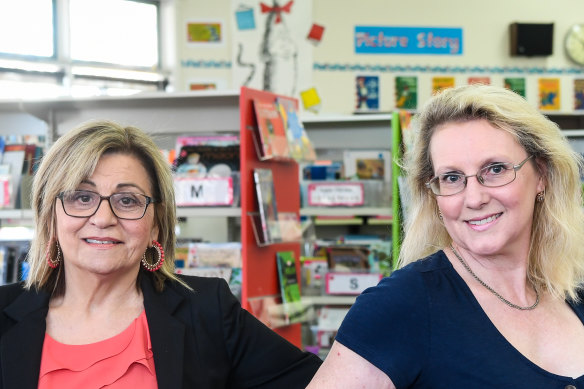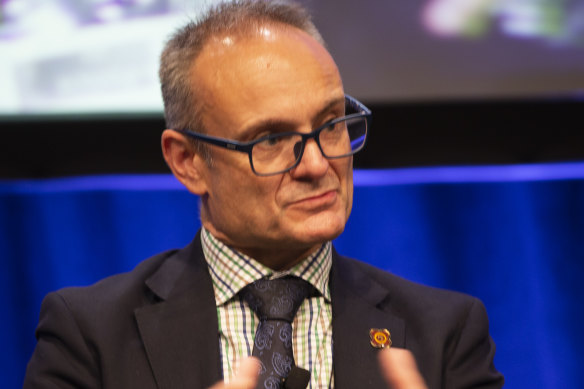They’re in four in five Victorian schools and they have a critical job: to help students catch up from almost two terms of remote learning during COVID.
They are tutors, about 5700 of them across the state. Education Minister James Merlino says small-group tutoring is the “most critical thing” the government is doing in schools this year.

Meadowglen Primary School learning specialists Jenny Devlin and Caroline Gorrell will help students catch up from COVID shutdowns.Credit: Justin McManus
More than 1800 Victorian schools – all government and just under 250 private schools – have employed tutors this year. Some have dipped into their equity funding to pay for them.
“We estimated some 200,000 students needed catch-up support. The Tutor Learning Initiative is our response,” Mr Merlino told The Age Schools Summit on Tuesday.
“For me for this year, it’s our tutor program and catching students up, that’s No. 1.”
But some principals say the number of students in need is much higher. Brendan Watson, principal of Catholic Regional College Sydenham, told the summit that 80 per cent of his students fell behind in 2020 and many students “vanished”, turning off their computer cameras during remote learning.

Brendan Watson, principal of Catholic Regional College Sydenham speaking at the Age Schools Summit.Credit: Meredith O’Shea
Tina King, president of the Australian Principals Federation, said students most disadvantaged by school closures last year might still fall through the cracks.
“It’s great to have the initiative, but how is it supporting the cohort of students who have attendance and engagement issues?” she said. “What sort of impact is the program having on those kids?”Karen Money, director of the program at the Department of Education, said the students being tutored were more likely to be disadvantaged and to have disengaged during Victoria’s long lockdowns.
They are also more likely to be young people in out-of-home care, Koori students, and those who live in families whose first language is not English.
Loretta Piazza, principal of Meadowglen Primary School in Epping, said her school had used the tutoring funding to create two learning specialist roles to teach selected students both during class and outside of class.
“They’ve been taken out of the responsibility of having a class,” she said. “They’re working with small groups, working with teachers, helping teachers plan the curriculum and planning the next step in the learning sequences.”
Wendy Powson, principal of Lilydale Secondary College, said while students were enjoying the extra help the program was making it harder to find casual relief teachers.
“Many regular casual relief teachers have taken up tutoring positions and therefore are no longer available for covering classes when teachers are ill, on camps or excursions and professional practice days,” she said. “It’s a real juggle and at times events have to be postponed.”
Jordana Hunter, Grattan Institute program director of education, said “well designed, focused teaching that really targets the specific learning gaps for students that have fallen behind will make the biggest difference.
“Getting kids back on track with their learning will also help boost motivation and engagement. Experiencing learning success can be really empowering for kids who have struggled.”
- with Michael Fowler
Start your day informed
Our Morning Edition newsletter is a curated guide to the most important and interesting stories, analysis and insights. Get it delivered to your inbox.